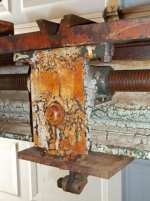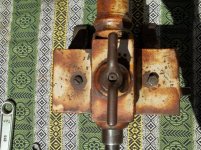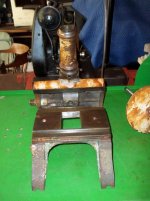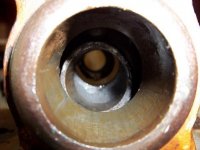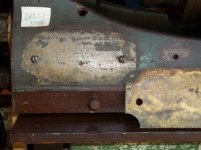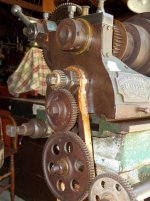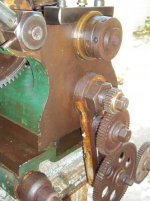Lester Bowman
Hot Rolled
- Joined
- Apr 9, 2011
- Location
- Modesto california USA
I am starting this new thread so it can be easily found when doing a search.More information can be found under " interesting pre 1900 lathe by Maltese hunter under this same forum.Thanks again Maltese!
I am extremely grateful to Robert Lang for his links to D L Harris history and Springfield tool co as well. Aparently Chester VanHorn designed and patented his "elevating" tool holder and Copes book shows such a lathe (made by Springfield tool co in Ma) equipped with one.Robert Lang has found a connection between Springfield tool and D L Harris and you can too if you follow the links he kindly provided in "interesting pre 1900 lathe".
I intend to keep this lathe as original as possible but it will be a work in progress and may take awhile.As can be seen in the pictures I'll be posting the lathe has a few issues but nothing that can't be easily replicated.I am recovering from a hernia operation so will post the pictures over the next couple of days.....No,the lathe didn't give me the hernia(!)
First I'll give you the pictures showing the overall lathe then followup with some detail pics of its various parts and "issues".
Oh! Joe in NH...I also deeply appreciate your insight and comments regarding the Harris.I also think the old Shepard lathe you have is marvelous...it is lovely.I hope the Harris will look half as good as yours when cleaned up and oiled.Your Shepard is a beautiful lathe.







I am extremely grateful to Robert Lang for his links to D L Harris history and Springfield tool co as well. Aparently Chester VanHorn designed and patented his "elevating" tool holder and Copes book shows such a lathe (made by Springfield tool co in Ma) equipped with one.Robert Lang has found a connection between Springfield tool and D L Harris and you can too if you follow the links he kindly provided in "interesting pre 1900 lathe".
I intend to keep this lathe as original as possible but it will be a work in progress and may take awhile.As can be seen in the pictures I'll be posting the lathe has a few issues but nothing that can't be easily replicated.I am recovering from a hernia operation so will post the pictures over the next couple of days.....No,the lathe didn't give me the hernia(!)
First I'll give you the pictures showing the overall lathe then followup with some detail pics of its various parts and "issues".
Oh! Joe in NH...I also deeply appreciate your insight and comments regarding the Harris.I also think the old Shepard lathe you have is marvelous...it is lovely.I hope the Harris will look half as good as yours when cleaned up and oiled.Your Shepard is a beautiful lathe.







Last edited by a moderator:







